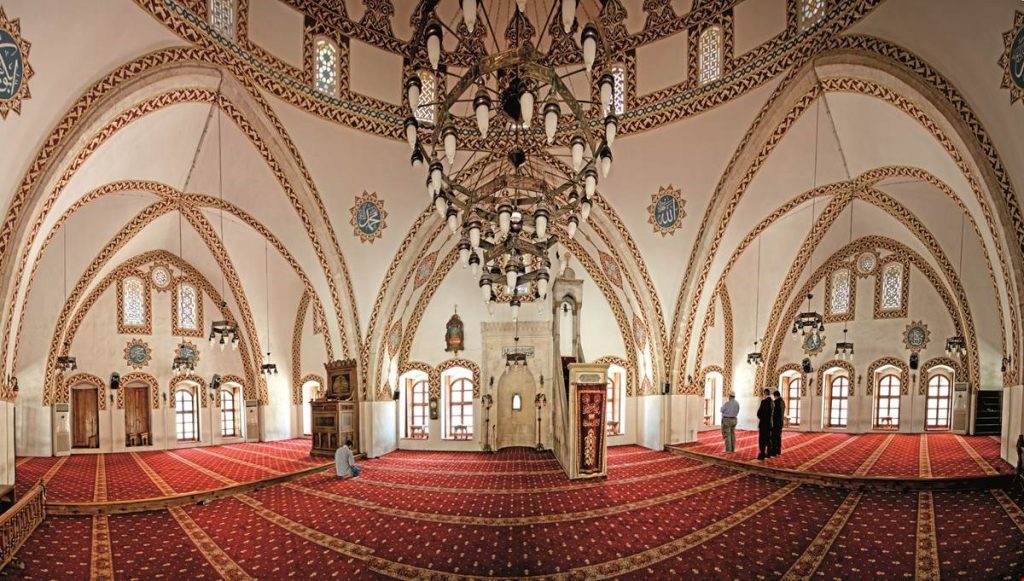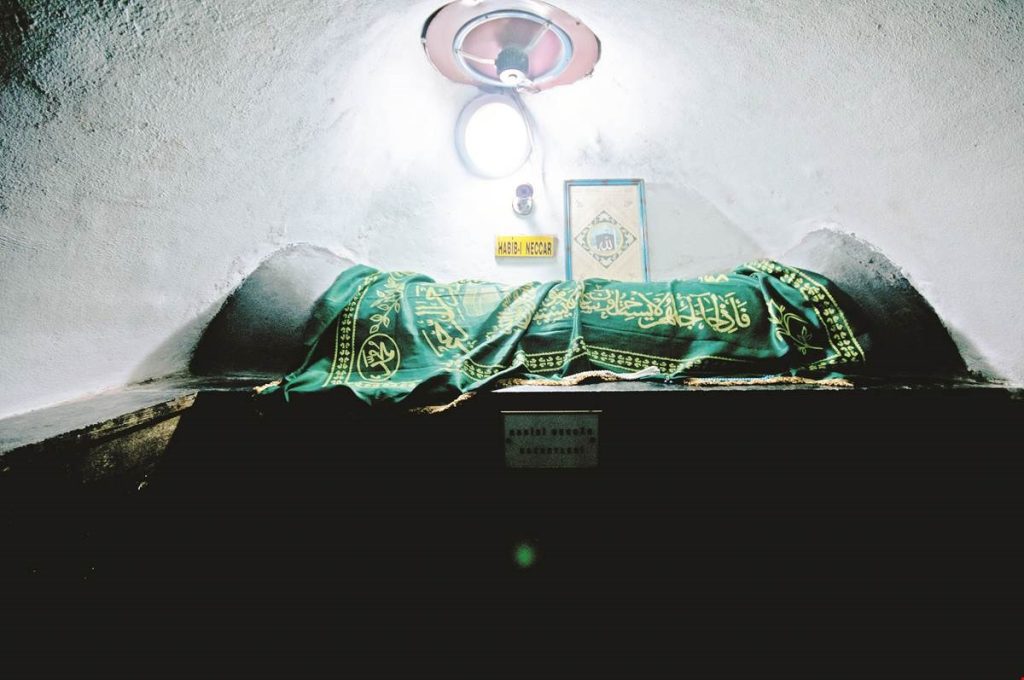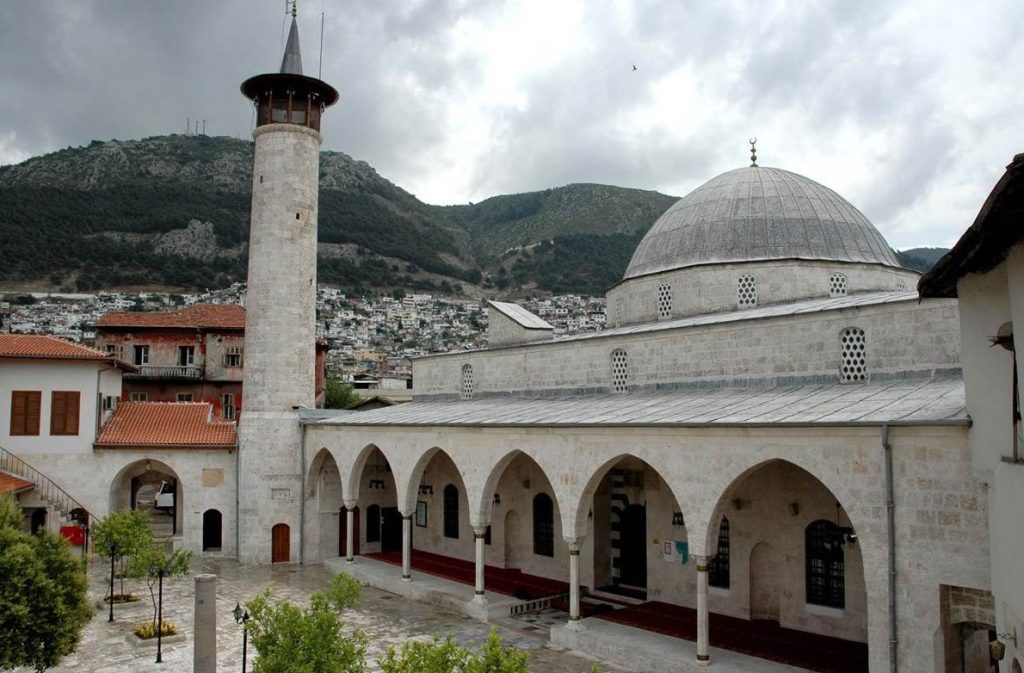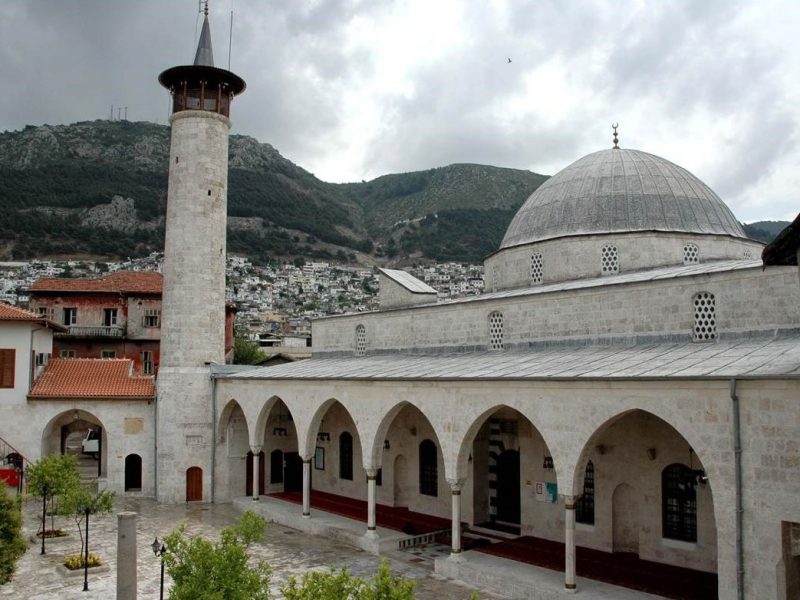Located in the historic city of Hatay (Antakya), Turkey, Habibi Neccar Mosque is one of the most significant religious and architectural landmarks in Anatolia. Built in 638 AD by Muslim Arabs, it is believed to be the first mosque constructed within the borders of Anatolia. Beyond its historical value in Islam, the site also holds deep importance for Christianity due to its connections with the disciples of Jesus.
Set against the scenic and centuries-old streets, this mosque is not only a place of worship but also a destination of spiritual and cultural convergence, admired for its timeless architecture, interfaith symbolism, and resilience through history.

Inside Habibi Nejjar Mosque
The Legend of Habibi Neccar – A Tale of Faith and Martyrdom
The story of Habibi Neccar, from whom the mosque takes its name, is rooted in the Qur’an’s Surah Yasin, specifically verses 13 to 32. According to Islamic tradition, during the 1st century AD, two disciples of Jesus, believed to be John (Yuhanna) and Paul (Pavlos); were sent to Antioch to spread the message of monotheism.
At the city’s entrance, they met a carpenter, referred to as Neccar, who welcomed them into his home. When the disciples miraculously healed his paralyzed son, Habibi Neccar accepted their faith. Inspired by their message, he became a vocal supporter of their teachings.
However, the people of Antioch rejected the disciples’ call and imprisoned them. Jesus is said to have sent Barnabas as a third envoy. Despite Barnabas’s efforts, the people remained hostile. Habibi Neccar’s public defense of the disciples led to his brutal martyrdom; he was tortured and killed. In one version of the legend, he was beheaded by a mob, and his head rolled down from the top of Mount Lebanon to the spot where the mosque now stands.

Habibi Neccar Tomb
The Construction of Habibi Neccar Mosque – A Sacred Site Reclaimed
Nearly six centuries later, the area came under Islamic rule. Caliph Umar instructed his commander, Abu Ubaida bin Jarrah, to construct a mosque over the ruins of a former Roman pagan temple, symbolizing the city’s transformation into a center of monotheism. Thus, Habibi Neccar Mosque was completed in 638 AD.
Over the centuries, the mosque witnessed many historical transitions. In 1098, the Crusaders occupied the city, but just a year later, it was retaken by Mamluk Sultan Baybars, who immediately restored the mosque. His name is inscribed on the mosque’s stone walls to this day. During the Ottoman period, the mosque and its minaret were damaged by earthquakes but were regularly repaired, demonstrating its enduring importance through time.

Habibi Neccar Mosque
Architectural Features of the Mosque
The mosque is a remarkable example of early Islamic architecture in Anatolia, blended with Arabic and Ottoman influences. During the Ottoman era, it was surrounded by a medrese (Islamic school), and in the 19th century, a beautiful stone fountain was added to the courtyard, both of which still exist today.
The entrance boasts a majestic arched crown door, flanked by two more arched and inscribed portals. One of the most distinctive features is the mosque’s minaret, with its polygonal shaft and wooden balcony, showcasing Arabic craftsmanship.
Inside the mosque, simplicity reigns with elegant arched interiors and minimal ornamentation. The tomb of Barnabas lies to the left of the mosque, while the tomb of Paul rests on the right, further emphasizing the site’s interreligious significance.

